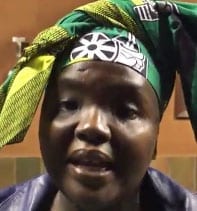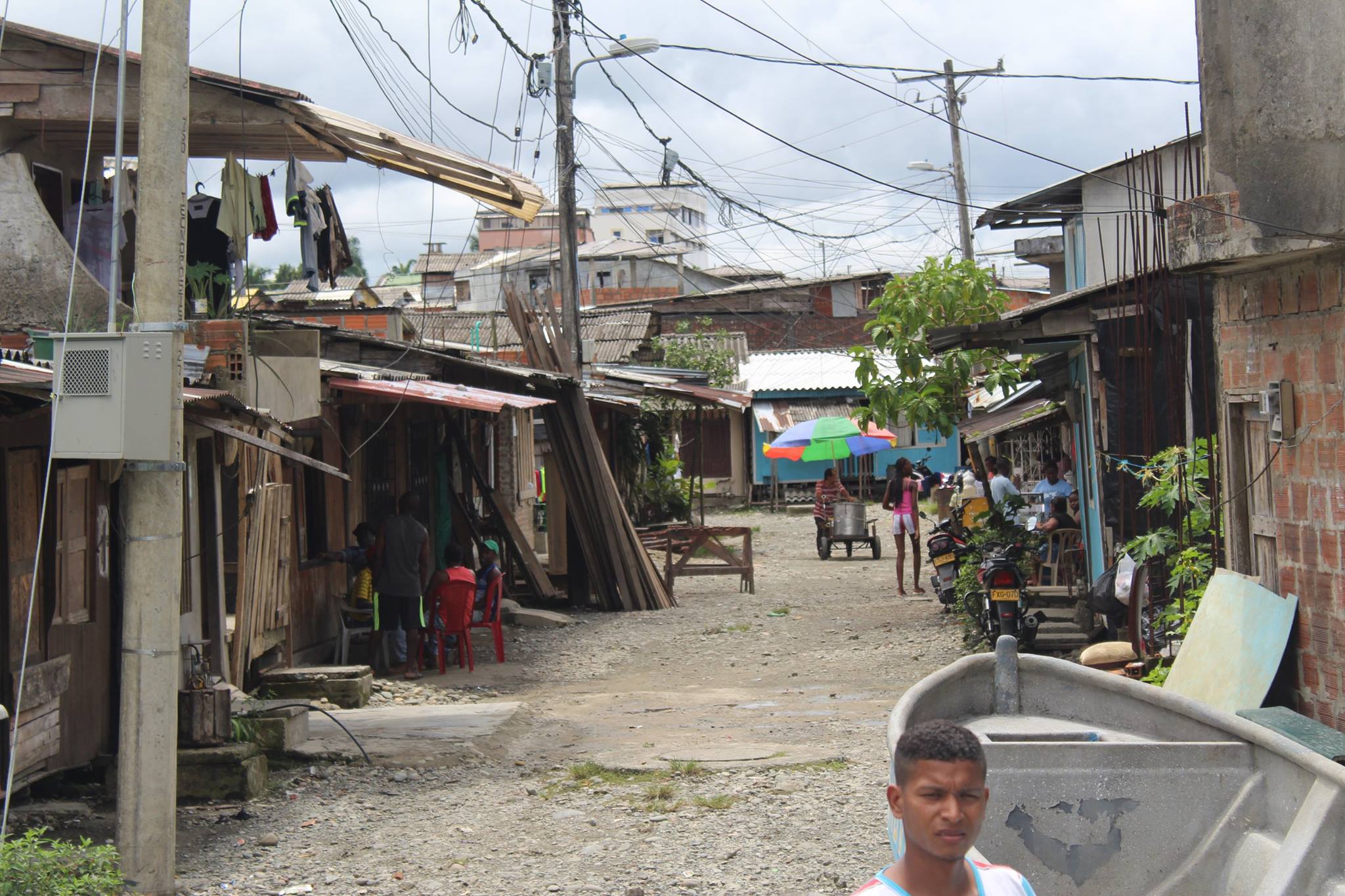
May 19, 2017
Workers in Buenaventura, Colombia, who are waging an indefinite work stoppage to call attention to the lack of jobs, good wages and basic public services in their community, have brought port operations and local commerce to a halt.
As the country’s largest seaport, Buenaventura accounts for 60 percent of the country’s maritime trade and in 2014, generated $2 billion in tax revenue. Yet residents, more than 90 percent of whom are of African descent, live in grinding poverty. The vast majority of workers toil in the city’s informal economy, most in jobs that lack a minimum wage, workplace safety and other fundamental protections, in large part because their jobs are illegally subcontracted and so excluded from the country’s labor protections. (Follow the protest on Twitter at #SomosBuenaventura)
Buenaventura residents lack even the most basic services, including potable water, reliable electricity and functioning sewage systems. The city’s already weak health system worsened in 2014 when its only public hospital closed, and now the nearest hospital for the city’s 400,000 residents is a three-hour drive away, in Cali. Housing and the education system are also substandard. The lack of economic opportunity and investment in the city have fed an environment of violence as the country attempts to emerge from a 50-year armed civil war.
Workers who attempt to form unions to improve their wages and working conditions often are threatened and fired, and unions report receiving phoned death threats from men claiming to belong to paramilitary organizations.
The current work action arises from the community-building efforts of a coalition of unions and Afro-Colombian, indigenous and student groups. In 2014, the groups first mobilized for dignity and peace.
Protests in Buenaventura coincide with work stoppages and demonstrations across Colombia, in which at least half a million people , including oil workers and salt miners in Meta and Manuare, are protesting broken promises by the national government to alleviate rampant state neglect, poverty, violence and corruption.
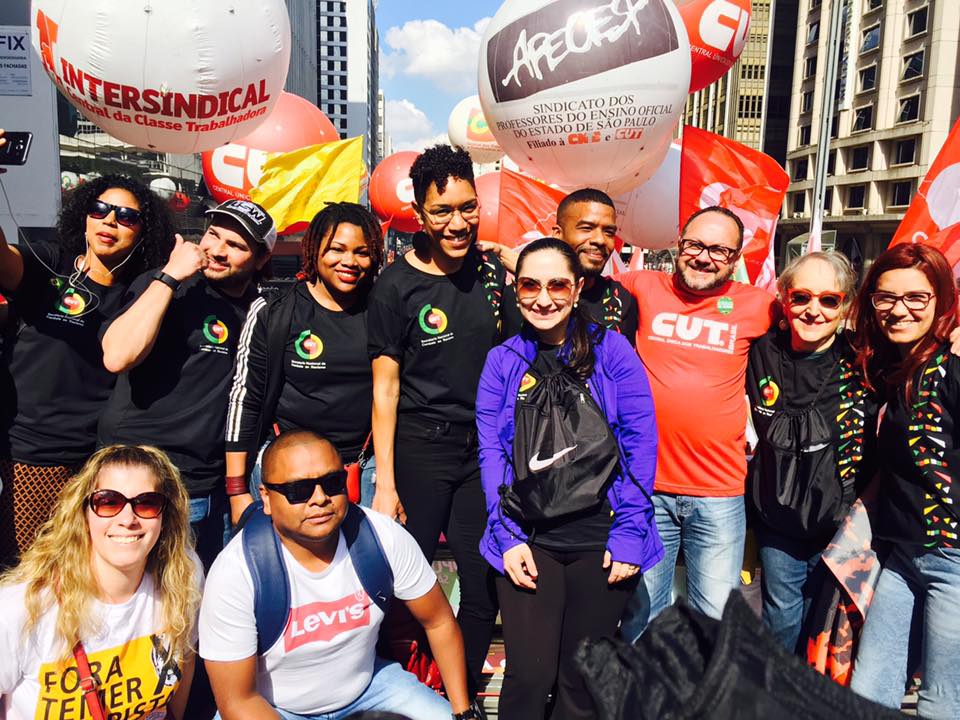
May 12, 2017
Among the millions of Brazilians who waged a recent 24-hour general strike to protest proposed legislation that would weaken labor regulations, many were young workers, some newly mobilized by the government’s attempts to impose drastic cuts on pensions, salaries and social security and dismantle labor rights, including provisions on vacations, overtime and working hours.
“The labor law reform bill being debated in the National Congress penalizes mainly young people and specifically young black workers, as young workers are primarily employed in precarious jobs and are the majority of the unemployed,” says Julia Reis Nogueira, national secretary of Racial Equality in Brazil’s Central Workers’ Union (CUT), a Solidarity Center partner. “When you put together the generational and racial question, this group will be the main victims of this disastrous reform.”
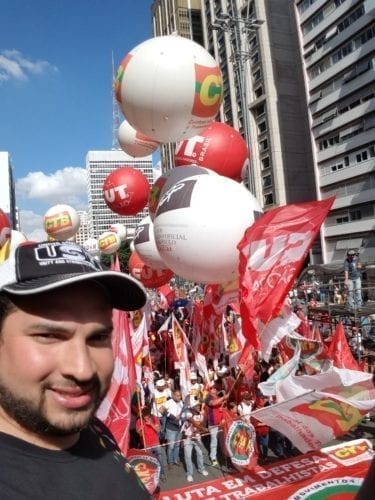
USW member Al Vega was among four U.S. young worker union leaders meeting with Brazil union activists. Credit: Al Vega
“Any of these ‘reforms’ will make it hard for young people to retire with dignity,” says Al Vega, director of policy and programs at MASSCOSH, where he focuses on strategies for bringing young adults into the U.S. labor movement. “The economic climate has really mobilized young people. They do feel like it is an all-out attack on the working class.”
Vega, 35, was among four U.S. participants in a recent youth and race exchange delegation sponsored by CUT and the AFL-CIO. Over five days, they learned about Brazil’s current political, economic and social environment and heard firsthand about the challenges facing young workers, especially those of Afro-Brazilian descent, in seeking good job and an end to rampant discrimination.
“Institutional racism is keeping them from jobs,” says Vega.
Afro-Brazilian Youth Face Rampant Discrimination, Violence
Although Afro-Brazilians make up 53 percent of Brazil’s population—more than 100 million people—their unemployment rates are typically 35 percent higher than those of white workers and their income is some 50 percent less than that received by white Brazilians. Afro-Brazilians are more than twice as likely to experience poverty than white Brazilians.
Rampant discrimination is behind much of this disparity. It is still common for firms to require pictures on resumes, and to make skin color a preference for selection processes. Workers’ educational levels make little difference: Afro-Brazilian men with a college education were paid only 70 percent of the wages made by white Brazilians. Afro-Brazilian women with a college degree receive only 41 percent of salaries paid to white Brazilians.
The economic struggles of Afro-Brazilians are framed within the country’s long legacy of slavery, which manifests in continuing brutality: One Afro-Brazilian youth is killed every 23 minutes in what some have called an “undeclared civil war,” according to a 2016 report by a Brazilian Senate committee. The committee issued the report in response to “a culture of violence based on racism and prejudice.” A Human Rights Watch report found that police in the state of Rio de Janeiro killed more than 8,000 people between 2006 and 2016, including at least 645 people in 2015—and three-quarters of those killed by police were black men.
Young Afro-Brazilians seeking jobs are doubly disadvantaged, with unemployment for all young adults (ages 15-24) nearing 25 percent in 2016. When young workers do find jobs, half are in the informal economy, where wages are low, work often dangerous and job stability non-existent.
The crisis for young workers is a crisis for Brazil: Nearly one-quarter of the country’s working population was between ages 15 and 24 in 2012.
Young Workers Standing up for Their Future
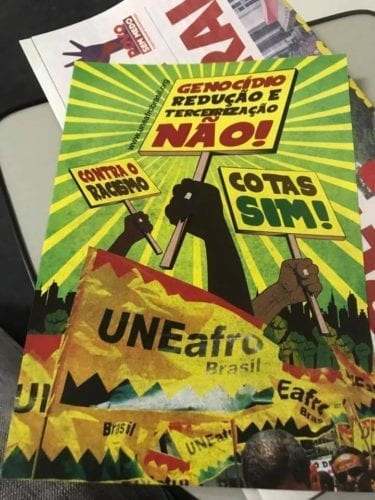
Signs from May Day rally in São Paulo. Credit: Courtney Jenkins
Young people know “there’s no hope for them if they don’t change the system,” says Vega. “They want to figure out how to get more and more young people involved. This is not the time to be on the sidelines. This is the time to get involved.”
In Brazil, a deep economic recession brought on by plummeting export commodities prices and increased inflation are manifesting in increasing unemployment, now at a record high of 13.7 percent. More than 14.2 million Brazilians were without a job in March. With young workers and workers of color especially hard hit by rising unemployment and proposed legislation that would undermine fundamental worker rights, they are standing up for the their future by mobilizing in the streets and through unions and other associations.
Vega, a member of United Steelworkers (USW) Local 9358 and young worker representative on the Massachusetts AFL-CIO Executive Board, was energized to hear from Brazilian delegates representing the Chemical Workers, Bank Workers, Teachers, and Retail and Commercial Workers Union Confederations who shared organizing strategies to reach youth of color in Brazil.
The unions are all members of CUT, Brazil’s largest labor federation, which was founded by rural and urban workers in 1983 as part of the ongoing struggle against the military dictatorship, which took power in 1964. In 2009, CUT created a National Secretariat for Youth and a National Secretariat of Racial Equality. Both secretariats functional locally in all 27 Brazilian states. This structure “has enabled a permanent dialogue between national and state-level youth leaders, in order to collectively construct policies and actions to promote the working youth in the country and to combat racism,” says Reis Nogueira.
“I was getting inspired to see these young people have representatives across Brazil,” says Vega. “That’s one of the key things I heard—because they have those formal positions, they can make sure their issues are being connected.”
Cross-Movement Building Connects Workers in Similar Struggles
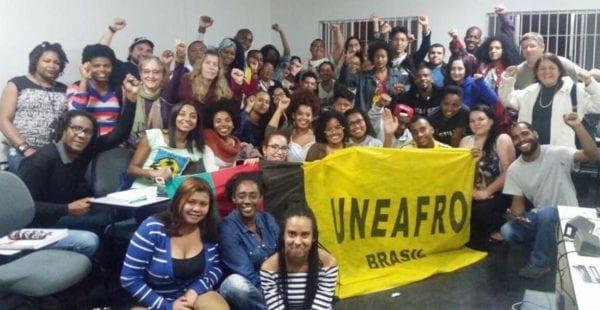
Brazil unions are partnering with a range of organizations with common goals. Credit: Courtney Jenkins
CUT also is expanding on cross-movement building in Brazil to connect with human rights organizations on organizational strategies and joint struggles for human rights and democracy. Delegates met with representatives of some of those organizations, including the youth wing of the Workers´ Party; Fora do Eixo, a progressive independent media collective; and representatives of the students´ movement.
The delegation, which traveled to Brazil at CUT’s invitation, is part of the federation’s outreach strategy.
Other U.S. participants included Rachel Bryan, an Electrical Workers union member engaged in criminal justice reform work; Sheva Diagne from the AFL-CIO; and Courtney Jenkins, a Postal Workers union member who is president of the Coalition of Black Trade Unionists’s Baltimore chapter and coordinator of the young worker program in his union.
Says Vega: “The overall experience was very eye-opening, inspirational, to see what a labor movement can look like when there is a true belief in what they want to achieve.”

May 3, 2017
A free press is a hallmark of democracy. Yet around the world, journalists are under threat for doing their job, risking their lives to report the news, ask difficult questions and hold the corrupt to account. According to an International Federation of Journalists (IFJ) study released for World Press Freedom Day, “journalists face killings, attacks, violence, bans and intimidation on a daily basis” around the world.
At its most extreme, the assault on journalism leads to murder, often with impunity. According to the IFJ, 93 journalists were killed in 2016, and 13 in the opening months of 2017. Over the last decade, most murdered journalists were local reporters covering politics and corruption, notes the Committee to Protect Journalists (CPJ), with about a third of them “first taken captive, the majority of whom were tortured, amplifying the killers’ message of intimidation to the media community.”
Mexico is one of the most dangerous places in the world for journalists, says the CPJ. Since 2010, more than 50 media workers were murdered or disappeared. The country ranks sixth on CPJ’s “Impunity Index,” which tracks the number of unsolved journalist murders as a percentage of population, in nations with five or more unsolved cases. Ahead of it are primarily countries in conflict: Somalia, Iraq, Syria, the Philippines and South Sudan.
Women journalists—targeted for their job as well as their gender—face additional challenges, including harassment and threats in the field, at the office and online. A soon-to-be-published survey of 214 women journalists in Pakistan, conducted by the Solidarity Center and Civic Action Resources, says that when women journalists are sexually harassed, “social taboos, segregation and stigma keep them
from speaking openly about it and seeking support. Since Pakistan is an honor-based society, any attack on a woman’s reputation can have serious repercussions for her, both professionally and personally.” The Solidarity Center works with Pakistani journalists—women and men—to achieve gender equality at the workplace and in the stories they report.
The CPJ also noted that a record number of media workers—259—were jailed in 2016. Nonetheless, journalists and their unions are taking a stand against rising authoritarianism and increasing restrictions on their ability to work. Around the world, reports the IFJ journalists’ unions are submitting formal protests to national and regional human rights bodies, advancing legal challenges and staging actions—from strikes to protests—“to defend media freedom and the rights of journalists.”
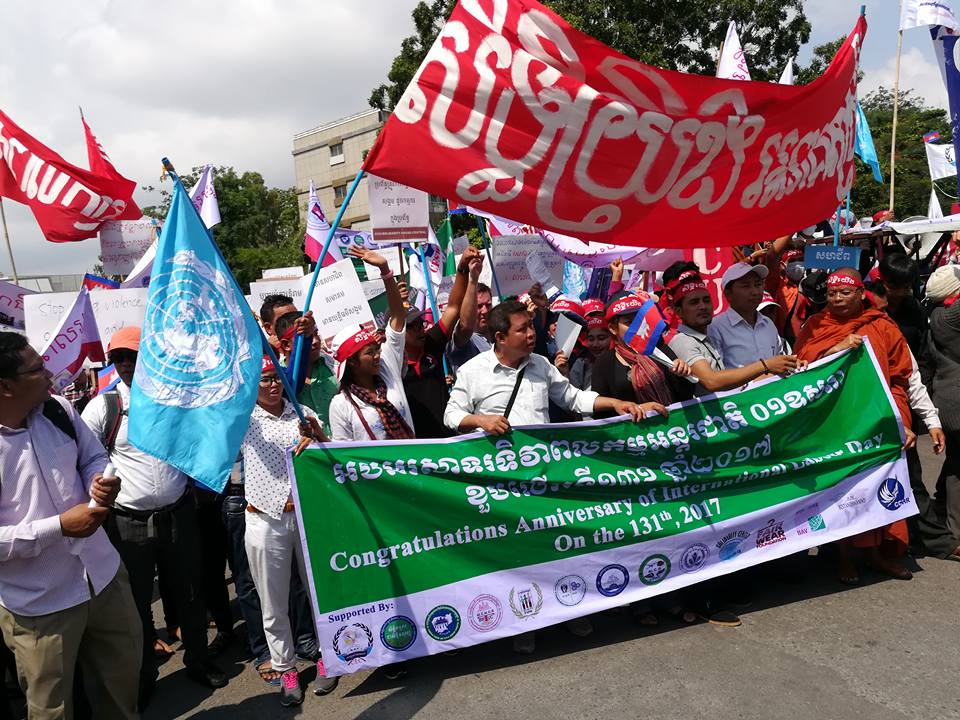
May 2, 2017
From Cambodia to Zimbabwe, in Serbia and Honduras, hundreds of thousands of workers and their families celebrated International Workers Day, honoring the dignity of work and the accomplishments of the labor movement in defending human rights, job stability, fair wages and safe workplaces. Together, workers and their unions are demonstrating their commitment to sustaining and improving worker lives.
Click here for our photo essay of May Day events by Solidarity Center allies around the globe.






